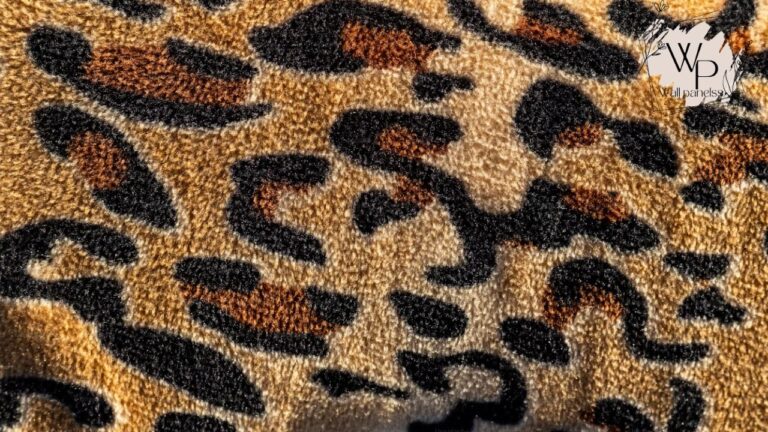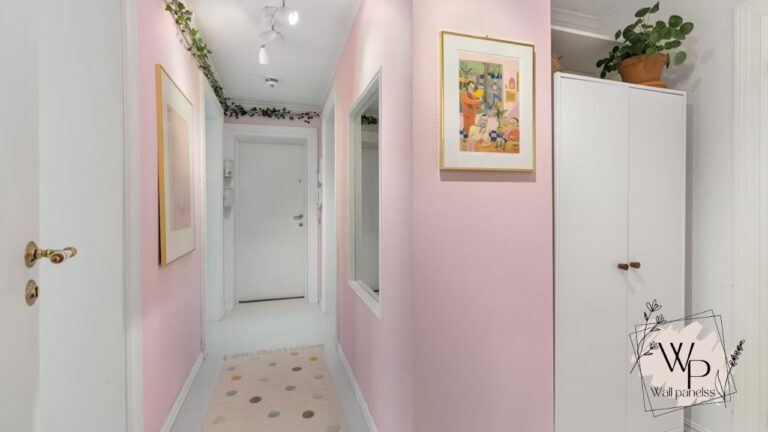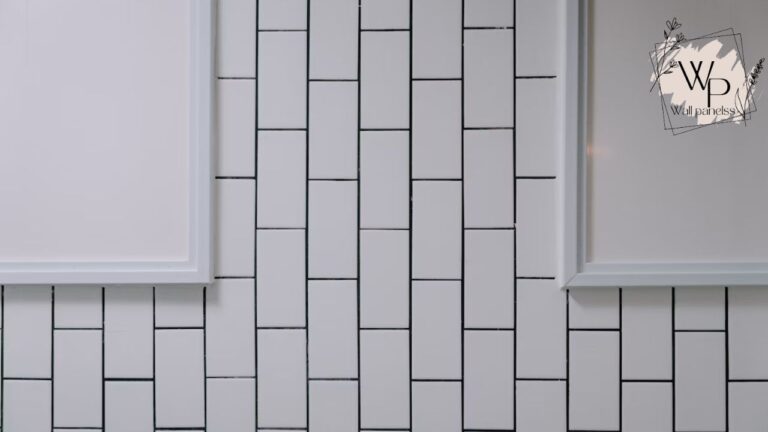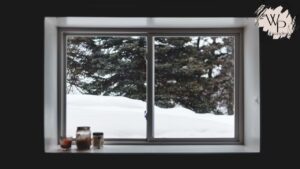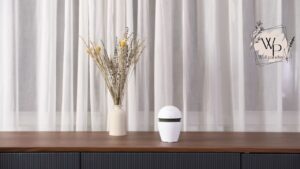Decorating your home is a chance to let your personality shine through. One of the most delightful and surprising trends making a comeback is duck wallpaper. This charming choice can add a touch of whimsy, rustic elegance, or playful fun to any room in your house. It’s far more versatile than you might think.
Whether you’re looking to create a serene, nature-inspired retreat or a vibrant, engaging space for your children, the right duck wallpaper can completely transform your home’s atmosphere. This guide will walk you through everything you need to know, from choosing the perfect design to installing it like a pro.
Duck Wallpaper at a Glance
Navigating the world of wall coverings can feel overwhelming. To simplify your search, here’s a quick overview of what you can expect when shopping for your new duck wallpaper.
| Feature | Description |
|---|---|
| Popular Styles | Vintage, Modern, Cartoon, Watercolor, Rustic |
| Material Types | Vinyl, Non-Woven, Peel-and-Stick, Grasscloth |
| Price Range | $30 – $250+ per roll |
| Popular Brands | Sanderson, Milton & King, Graham & Brown, Spoonflower |
| Best For | Nurseries, bathrooms, feature walls, laundry rooms |
| Installation | DIY-friendly (especially peel-and-stick) or professional |
The Enduring Charm of Duck Wallpaper: A Brief History
The use of animal and nature motifs in home decor is not a new phenomenon. For centuries, designers have drawn inspiration from the natural world to bring a sense of peace and beauty indoors. The duck wallpaper trend fits perfectly within this tradition, blending classic pastoral scenes with modern design sensibilities.
From Country Estate to Modern Home
Historically, imagery of waterfowl, including ducks and geese, was popular in the decor of stately country homes and hunting lodges in Europe. These designs often depicted ducks in their natural habitats—marshlands, ponds, and flying in formation. They evoked a sense of connection to the land and the changing seasons.
Brands like Sanderson, a British heritage company founded in 1860, became famous for their iconic patterns. Their “Mallard Ducks” wallpaper, for instance, has been a beloved design for decades. It features detailed, lifelike illustrations that feel both timeless and sophisticated. This classic style of duck wallpaper continues to be popular today, especially for those seeking a traditional or rustic aesthetic.
The Modern Revival
In recent years, interior designers and homeowners have rediscovered the appeal of these feathered friends. The modern revival has seen the emergence of new styles that go far beyond the classic pastoral scene. Today, you can find duck wallpaper in a wide array of artistic interpretations.
From minimalist, Scandinavian-inspired patterns with simple duck silhouettes to bold, colorful pop-art designs, the options are endless. This versatility has allowed the trend to move beyond the country kitchen and into chic urban apartments, stylish powder rooms, and imaginative children’s bedrooms. The renewed interest is also fueled by a broader movement toward “cottagecore” and “grandmillennial” styles, which embrace nostalgia, comfort, and traditional patterns with a fresh twist.
Exploring the Styles: Finding Your Perfect Duck Wallpaper
The beauty of duck wallpaper lies in its incredible variety. Whether your home is modern and minimalist or cozy and traditional, there’s a design that will complement your vision perfectly. Let’s dive into some of the most popular styles available.
Vintage and Rustic Charm
For those who love a touch of nostalgia, vintage-inspired duck wallpaper is a fantastic choice. These designs often feature detailed, hand-drawn illustrations reminiscent of old nature books or classic pastoral paintings.
- Key Features: Muted color palettes (earth tones, soft blues, and greens), realistic depictions of ducks, and often a scenic background of reeds or water.
- Best For: Creating a cozy atmosphere in a living room, study, or dining room. This style pairs beautifully with antique furniture, natural wood finishes, and classic decor elements.
One user, Sarah from Ohio, shared her experience: “I used a vintage duck wallpaper for a feature wall in our den. It’s stunning! It adds so much character and warmth. Everyone who visits comments on how unique and beautiful it is. Rating: 5/5 Stars.”
Modern and Minimalist
If you prefer clean lines and a contemporary look, a modern duck wallpaper can add a playful yet sophisticated element to your space. These designs strip away the ornate details, focusing instead on form and color.
- Key Features: Simple silhouettes, geometric patterns incorporating duck shapes, and often a limited or monochromatic color scheme.
- Best For: A chic powder room, a stylish home office, or a subtle accent in a modern living area. This style works well with sleek furniture and a “less is more” approach to decorating.
Whimsical and Playful for Kids’ Rooms
When it comes to decorating a nursery or a child’s bedroom, duck wallpaper is an absolute winner. From cute rubber ducks to charming cartoon characters, the options are designed to spark joy and imagination.
- Key Features: Bright, cheerful colors, friendly-faced duck characters, and often incorporates other fun elements like bubbles, ponds, or raindrops.
- Best For: Nurseries, playrooms, and kids’ bathrooms. These designs create a fun and stimulating environment for little ones.
A review from a happy parent, Mark T., noted: “We chose a rubber duck wallpaper for our baby’s nursery, and it’s adorable. The peel-and-stick version was so easy to put up. It really brought the whole room together. Rating: 5/5 Stars.”
Artistic and Abstract
For the truly bold, an artistic or abstract duck wallpaper can serve as a stunning piece of art for your walls. These designs move beyond literal interpretations, using the duck motif as a starting point for creative expression.
- Key Features: Watercolor effects, painterly brushstrokes, unconventional color combinations, or patterns where the duck shape is deconstructed or repeated in an abstract way.
- Best For: A dramatic feature wall in an entryway, dining room, or bedroom. This style is for those who want their walls to make a statement.
Understanding Wallpaper Materials
The look and feel of your duck wallpaper are not just about the design; the material plays a crucial role in its durability, appearance, and ease of installation.
Peel-and-Stick (Removable)
This is the most beginner-friendly option. Peel-and-stick wallpaper functions like a large sticker. It has a self-adhesive backing, so you don’t need to mess with separate paste. It’s also typically removable, making it a great choice for renters or for those who like to change their decor frequently. Many modern duck wallpaper designs are available in this format.
Non-Woven
Non-woven wallpapers are a blend of natural and synthetic fibers, making them both breathable and durable. They are tear-resistant and easy to work with. With this type, you apply the paste directly to the wall, not the paper, which many people find less messy. It’s also fully strippable, meaning it comes off in one piece when you’re ready for a change.
Traditional Paper
This is the classic wallpaper material. It’s the most affordable option but can be more delicate and difficult to install. It requires “booking,” a process where you apply paste to the paper and let it rest before hanging. It’s not recommended for high-humidity areas like bathrooms.
Vinyl
Vinyl wallpaper is the workhorse of the bunch. It consists of a paper backing with a vinyl film on top, making it incredibly durable, scrubbable, and resistant to moisture. This makes it an ideal choice for bathrooms, kitchens, and high-traffic areas. Many classic duck wallpaper patterns are printed on high-quality vinyl for longevity.
How to Choose the Right Duck Wallpaper for Your Space
With so many options, how do you pick the one that’s right for you? Consider these factors to narrow down your choices and find the perfect match.
Consider the Room’s Purpose and Mood
First, think about the function of the room and the atmosphere you want to create.
- For a Relaxing Bedroom: Opt for a duck wallpaper with a serene, natural scene and a soft, muted color palette. A watercolor design featuring ducks on a calm pond can create a peaceful sanctuary.
- For a Fun Kids’ Room: Go bold with bright colors and playful cartoon ducks. A pattern featuring yellow rubber ducks is a classic choice that never fails to bring a smile.
- For an Elegant Powder Room: A small space like a powder room is the perfect place to be daring. A sophisticated, modern duck wallpaper with a metallic finish or a bold graphic print can make a huge impact.
Think About Scale and Pattern Size
The size of the pattern should be proportional to the size of the room and your walls.
- Large-Scale Patterns: A large, dramatic duck print can look stunning on a single feature wall in a spacious room. However, it might overwhelm a small space.
- Small-Scale Patterns: A smaller, more delicate pattern is versatile and works well in almost any room, including small ones. It can create a subtle texture and interest without being too busy.
Coordinate with Your Existing Decor
Your new duck wallpaper should complement, not clash with, your existing furniture, flooring, and textiles.
- Pull a Color: Identify one or two key colors from the wallpaper design and repeat them throughout the room in your accessories, like throw pillows, curtains, or a rug. This creates a cohesive and professionally designed look.
- Match the Style: Ensure the style of the wallpaper aligns with your furniture. A rustic, vintage duck wallpaper pairs well with wooden furniture, while a sleek, modern design works best with contemporary pieces.
Get Samples!
This is perhaps the most important tip. Colors can look very different on a screen than they do in your home. Always order a sample of your chosen duck wallpaper before committing to buying several rolls.
Tape the sample to the wall and observe it at different times of the day. See how it looks in natural daylight and under your artificial lighting at night. This small step can save you from a costly and time-consuming mistake.
A Step-by-Step Guide to Installing Your Wallpaper
Installing wallpaper can seem intimidating, but with the right preparation and a bit of patience, it’s a manageable DIY project. This guide focuses on the “paste-the-wall” method used for non-woven papers and the peel-and-stick method, as these are the most user-friendly.
Step 1: Prepare Your Walls
A smooth, clean surface is essential for a good finish.
- Clean the Wall: Wash the wall with a mild soap and water solution to remove any dirt or grease. Let it dry completely.
- Smooth the Surface: Fill any holes or cracks with spackle. Once dry, sand the patches until they are perfectly smooth and level with the wall.
- Prime the Wall: Apply a coat of wallpaper primer. This helps the wallpaper adhere better and makes it much easier to remove later on. Let the primer dry for at least 24 hours.
Step 2: Measure and Cut Your First Strip
Measure the height of your wall from ceiling to baseboard. Add about 4 inches to this measurement to give you a little extra at the top and bottom for trimming.
Unroll your duck wallpaper on a flat surface and cut your first strip to the required length, using a straight edge and a sharp utility knife. If your pattern has a repeat, make sure you account for it when cutting subsequent strips so the design lines up perfectly.
Step 3: Hang the First Strip
This is the most important strip, as it will guide all the others.
- For Paste-the-Wall: Use a roller or brush to apply an even layer of wallpaper paste directly to the section of the wall where your first strip will go.
- For Peel-and-Stick: Carefully peel back the first few inches of the backing paper from the top of your strip.
Position the top of the strip at the ceiling, leaving about 2 inches of excess. Use a level or a plumb line to ensure it is perfectly vertical. Gently press the strip onto the wall, working your way down.
Step 4: Smooth and Trim
Use a wallpaper smoothing tool or a plastic squeegee to smooth out any air bubbles or wrinkles. Work from the center of the strip out to the edges.
Once the strip is fully adhered and smooth, use your sharp utility knife and a straight edge to trim the excess paper at the ceiling and baseboard.
Step 5: Hang Subsequent Strips
For your next strip, carefully align the pattern with the edge of the strip you just hung. There should be no gap and no overlap; the edges should butt up against each other perfectly.
Repeat the process of applying the strip, smoothing it out, and trimming the excess. Wipe away any excess paste from the seams with a damp sponge as you go.
Step 6: Work Around Obstacles
For outlets and light switches, turn off the power to the room first. Hang the wallpaper right over the obstacle, then use your knife to carefully cut an ‘X’ over the opening. Trim away the flaps to create a neat opening.
Continue this process around the room until your beautiful new duck wallpaper is up. Let it dry completely for at least 24-48 hours before moving furniture back against the walls.
Frequently Asked Questions (FAQs)
Here are answers to some common questions people have when considering duck wallpaper for their home.
Is duck wallpaper easy to clean?
It depends on the material. Vinyl and some non-woven wallpapers are highly durable and can be gently wiped with a damp cloth, making them great for kitchens or bathrooms. Traditional paper wallpapers are more delicate and should only be dusted. Always check the manufacturer’s instructions for cleaning guidelines.
Where can I buy high-quality duck wallpaper?
You can find a wide selection of duck wallpaper from various sources. Specialty wallpaper stores, both online and brick-and-mortar, are a great place to start. Brands like Sanderson, Graham & Brown, and Milton & King are known for their quality. Websites like Spoonflower and Etsy offer unique designs from independent artists, often available in peel-and-stick format.
Is duck wallpaper only for country-style homes?
Not at all! While it’s a natural fit for rustic or country aesthetics, modern and abstract duck wallpaper designs are incredibly versatile. A minimalist duck pattern can look chic and sophisticated in a contemporary apartment, while a bold, artistic design can serve as a focal point in any style of home.
Can I use duck wallpaper in a bathroom?
Yes, you can, but it’s crucial to choose the right material. Opt for a vinyl or vinyl-coated wallpaper, as these are specifically designed to withstand the humidity and moisture of a bathroom. Ensure the room is well-ventilated to prevent the wallpaper from peeling over time. A fun duck wallpaper can turn a functional bathroom into a truly special space.
Is peel-and-stick duck wallpaper a good option?
Absolutely! Peel-and-stick duck wallpaper is a fantastic choice for DIYers, renters, or anyone who enjoys changing their decor. It’s easy to apply, easy to remove, and doesn’t damage the walls. The quality and variety of designs available in this format have improved dramatically in recent years.
Embrace the Quirk and Charm
Choosing a duck wallpaper is about more than just covering a wall; it’s about infusing your home with personality, charm, and a touch of the unexpected. It’s a design choice that tells a story and creates a memorable space for you and your guests.
From the serene elegance of a vintage pattern to the joyful energy of a modern print, this timeless motif offers something for every taste and style. So go ahead, explore the wonderful world of duck wallpaper and get ready to create a space that is uniquely you.
Admin Recommendation
WallPanel Home Assistant Idle: The Ultimate Guide to Smart Home Displays


